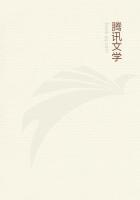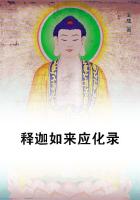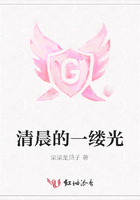Under the eyebrows come the eyes. These are naturally two in number. Each of them has an upper and a lower eyelid, and the hairs on the edges of these are termed 'eyelashes'. The central part of the eye includes the moist part whereby vision is effected, termed the 'pupil', and the part surrounding it called the 'black'; the part outside this is the 'white'. A part common to the upper and lower eyelid is a pair of nicks or corners, one in the direction of the nose, and the other in the direction of the temples. When these are long they are a sign of bad disposition; if the side toward the nostril be fleshy and comb-like, they are a sign of dishonesty.
All animals, as a general rule, are provided with eyes, excepting the ostracoderms and other imperfect creatures; at all events, all viviparous animals have eyes, with the exception of the mole. And yet one might assert that, though the mole has not eyes in the full sense, yet it has eyes in a kind of a way. For in point of absolute fact it cannot see, and has no eyes visible externally; but when the outer skin is removed, it is found to have the place where eyes are usually situated, and the black parts of the eyes rightly situated, and all the place that is usually devoted on the outside to eyes:
showing that the parts are stunted in development, and the skin allowed to grow over.
10
Of the eye the white is pretty much the same in all creatures; but what is called the black differs in various animals. Some have the rim black, some distinctly blue, some greyish-blue, some greenish; and this last colour is the sign of an excellent disposition, and is particularly well adapted for sharpness of vision. Man is the only, or nearly the only, creature, that has eyes of diverse colours.
Animals, as a rule, have eyes of one colour only. Some horses have blue eyes.
Of eyes, some are large, some small, some medium-sized; of these, the medium-sized are the best. Moreover, eyes sometimes protrude, sometimes recede, sometimes are neither protruding nor receding. Of these, the receding eye is in all animals the most acute; but the last kind are the sign of the best disposition. Again, eyes are sometimes inclined to wink under observation, sometimes to remain open and staring, and sometimes are disposed neither to wink nor stare. The last kind are the sign of the best nature, and of the others, the latter kind indicates impudence, and the former indecision.
11
Furthermore, there is a portion of the head, whereby an animal hears, a part incapable of breathing, the 'ear'. I say 'incapable of breathing', for Alcmaeon is mistaken when he says that goats inspire through their ears. Of the ear one part is unnamed, the other part is called the 'lobe'; and it is entirely composed of gristle and flesh. The ear is constructed internally like the trumpet-shell, and the innermost bone is like the ear itself, and into it at the end the sound makes its way, as into the bottom of a jar. This receptacle does not communicate by any passage with the brain, but does so with the palate, and a vein extends from the brain towards it.
The eyes also are connected with the brain, and each of them lies at the end of a little vein. Of animals possessed of ears man is the only one that cannot move this organ. Of creatures possessed of hearing, some have ears, whilst others have none, but merely have the passages for ears visible, as, for example, feathered animals or animals coated with horny tessellates.
Viviparous animals, with the exception of the seal, the dolphin, and those others which after a similar fashion to these are cetaceans, are all provided with ears; for, by the way, the shark-kind are also viviparous. Now, the seal has the passages visible whereby it hears;but the dolphin can hear, but has no ears, nor yet any passages visible. But man alone is unable to move his ears, and all other animals can move them. And the ears lie, with man, in the same horizontal plane with the eyes, and not in a plane above them as is the case with some quadrupeds. Of ears, some are fine, some are coarse, and some are of medium texture; the last kind are best for hearing, but they serve in no way to indicate character. Some ears are large, some small, some medium-sized; again, some stand out far, some lie in close and tight, and some take up a medium position; of these such as are of medium size and of medium position are indications of the best disposition, while the large and outstanding ones indicate a tendency to irrelevant talk or chattering. The part intercepted between the eye, the ear, and the crown is termed the 'temple'. Again, there is a part of the countenance that serves as a passage for the breath, the 'nose'. For a man inhales and exhales by this organ, and sneezing is effected by its means: which last is an outward rush of collected breath, and is the only mode of breath used as an omen and regarded as supernatural. Both inhalation and exhalation go right on from the nose towards the chest; and with the nostrils alone and separately it is impossible to inhale or exhale, owing to the fact that the inspiration and respiration take place from the chest along the windpipe, and not by any portion connected with the head; and indeed it is possible for a creature to live without using this process of nasal respiration.
Again, smelling takes place by means of the nose,-smelling, or the sensible discrimination of odour. And the nostril admits of easy motion, and is not, like the ear, intrinsically immovable. A part of it, composed of gristle, constitutes, a septum or partition, and part is an open passage; for the nostril consists of two separate channels. The nostril (or nose) of the elephant is long and strong, and the animal uses it like a hand; for by means of this organ it draws objects towards it, and takes hold of them, and introduces its food into its mouth, whether liquid or dry food, and it is the only living creature that does so.

